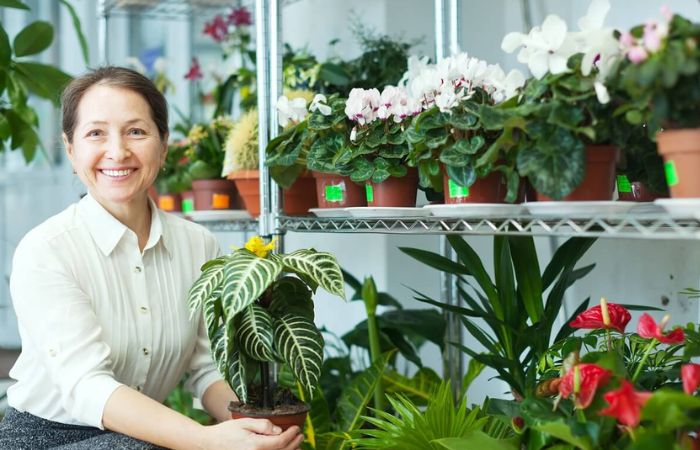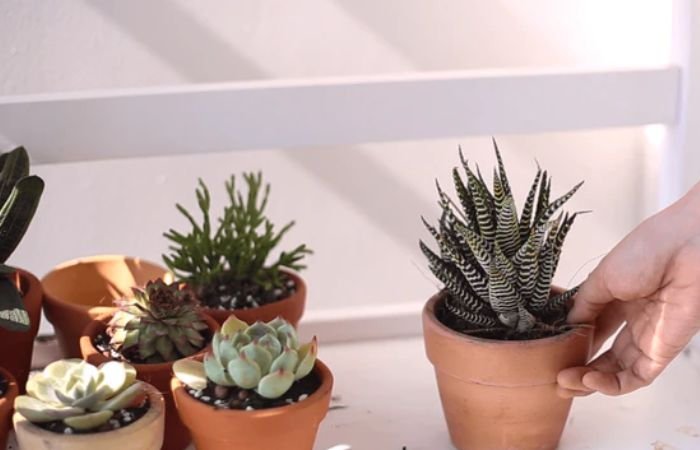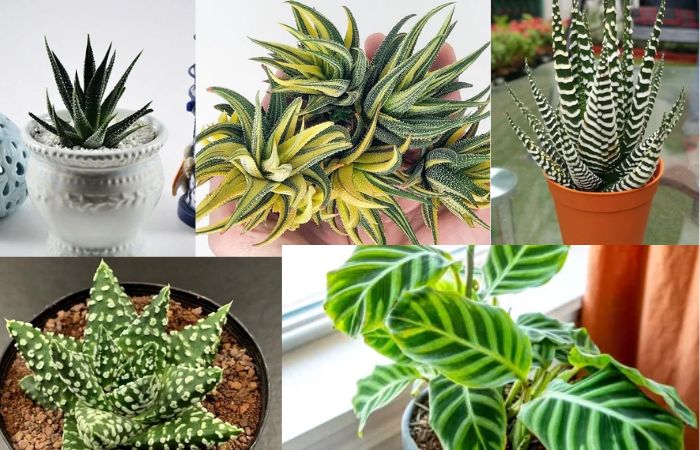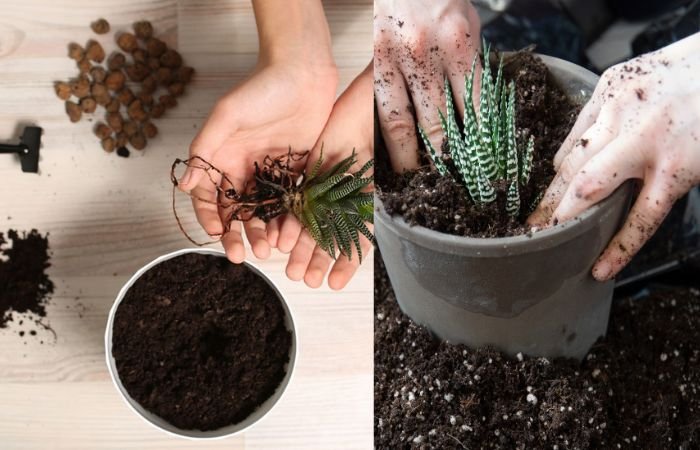If you are looking for a unique and striking indoor plant then Zebra plant is an amazing choice to consider. It is a tropical plant with its bold and beautiful striped leaves, just like a zebra in a zoo. It is first found in Brazil in sunshine light with high humidity.
It is a popular choice for household women due to its unique and eye-catching appearance. Moreover, it gives a feel of jungle vegetation at your home. It is an indoor plant with gorgeous dark green and white striped leaves.
However, cultivating and caring for this plant needs some additional knowledge and attention. In this article, we will guide you with everything that you need to know about growing a zebra plant at home.
Deep Knowledge about Zebra Plant
| Common Name | Zebra Plant |
| Origin | Brazil |
| Plant type | Annual |
| Mature size | 1–6 ft. tall, 1–5 ft. wide |
| Sun exposure | Partial |
| Soil type | Moist |
| Soil pH | Neutral, acidic |
| Bloom time | Summer |
| Flower color | Yellow |
| Temperature | 15-20`C |
| Poisonous for pets | Non-toxic to cats and dogs |
Know more about- Tips to maintain indoor plants
Zebra Plant Care
It is a tropical houseplant that is known for its amazing and unique leaves. Like every other plant this plant also requires specific care and for that you need to know specific growing conditions for the same. It can become a striking centerpiece at your home if you provide good care to it.
Keep following things in consideration before or after keeping zebra plant at your house:
Light Requirements
The zebra plants grow in bright, indirect light. Direct sunlight may damage its beautiful leaves so it is advisable to find the right fit or place for keeping a zebra plant where it can receive filtered light. A north-facing direction would be a perfect fit, rest is your preference where you want to place it.
Watering
It is mandatory to water the plants in the right manner, over-watering can destroy roots. Watering the plant once a week is sufficient for its growth. Before watering, always check whether the top soil is dry or not, if it is dry then water accordingly. Make sure the plant has a drainage basin to prevent water logging.
Humidity
It prefers to grow in high humidity levels that’s why it is preferable to keep at north facing windows. Sprinting the plant regularly with a mini spray bottle can help to increase its humidity level. In winter season, you need to artificially increase its humidity by creating a virtual humidifier.
Soil Requirements
It requires a soil mix that contains peat moss, perlite and vermiculite for the right amount of moisture. Too much soil can make it dense and cause root problems.
Temperature
It usually grows in warm moist temperatures between 60-75 ºF (15-23 ºC). It is important to keep plants away from cold temperatures or objects as it can destroy its leaves.
Fertilization
It grows best during the summer and spring season. Using a balanced fertilizer after every few weeks can make plants more healthy and nutritious. Avoid over-fertilizing as it will damage its root.
In addition- Plants to not keep inside at home
Pruning
Pruning is beneficial to keep the plant healthy and remove any yellow or damaged leaves. Using a clean, sharp pair of scissors or pruning shears, cut the leaves close to the stem. Pruning can also help promote new growth and maintain the plant’s size and shape.
Types of Zebra Plant
There are several types of zebra plants, which are all members of the Calathea family. Each type has its own unique appearance, but they all share the distinctive zebra-like stripes on their leaves.
Here are some of the most popular types of zebra plants:
- Calathea Zebrina: This is the most well-known type of zebra plant, with large, glossy leaves that have dark green stripes and lighter green markings.
- Rattlesnake: This type of zebra plant has longer, narrower leaves than the Calathea zebrina and features more intricate patterns of stripes and markings.
- Tigrina: This is a rare type of zebra plant that has striking silver stripes on its dark green leaves.
- Dottie: This variety has dark green leaves with pink stripes and is sometimes called the Pink Zebra Plant
- Congo: This type of zebra plant has a more compact growth habit than other varieties, with leaves that are dark green with lighter green stripes.
- White Fusion: While not technically a zebra plant, this variety is a popular hybrid that features white and green stripes and markings on its leaves, creating a unique and stunning appearance.
How to Propagate a Zebra Plant
Propagating a zebra plant is a great way to create new plants from an existing one. The best time to propagate a zebra plant is during the growing season, which is usually in the spring or early summer. 
Here are the steps to propagate a zebra plant:
- Select a healthy and mature zebra plant with several stems or shoots.
- Choose a stem that is at least 4-6 inches long and has a few leaves.
- Use a clean, sharp pair of scissors to make a clean cut below a leaf node.
- Remove the lower leaves on the stem, leaving only a few at the top.
- Prepare a small pot with a well-draining soil mix, such as one that includes perlite and peat moss.
- Make a hole in the soil and gently place the stem in the hole, ensuring that the leaf node is covered with soil.
- Water the soil thoroughly but be careful not to overwater, as this can cause root rot.
- Cover the pot with a clear plastic bag to create a humid environment.
- Place the pot in a bright, indirect light location and maintain a temperature between 65°F to 75°F (18°C to 24°C).
- After a few weeks, check for new growth and root development. Once roots have formed, remove the plastic bag.
Know more about- Money plant benefits
Common Problems with Zebra Plant
Like any houseplant, zebra plants can be subjected to a variety of issues. Here are some common problems you may encounter with a zebra plant:
- Browning or yellow leaves
- Curling leaves due to low humidity
- Brown edges or spots on leaves
- Pest infestations; such as webbing or residue
- Root rot
CONCLUSION
In conclusion, the zebra plant is a beautiful and unique houseplant that can add a touch of exotic elegance to any space. With its distinctive zebra-like markings and low-maintenance care requirements, it is a popular choice for plant enthusiasts and beginners alike.
By providing your zebra plant with bright, indirect light, soil, and regular watering, you can help it to grow. Additionally, taking steps to prevent or address common issues such as pest infestations, overwatering, and low humidity can help ensure that your zebra plant remains healthy and beautiful.
Whether you’re looking to add some greenery to your home or office, or simply want to enjoy the natural beauty of a unique and interesting plant, the zebra plant is definitely worth considering. With its striking appearance and easy care requirements, it is sure to be a conversation starter and a joy to care for.
Tips- How to decorate your room with indoor plants


